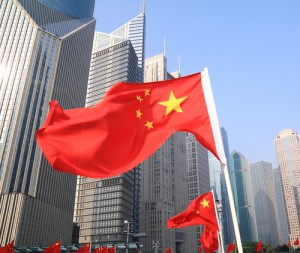
By Michael Hasenstab, Ph.D.
Chief Investment Officer
Templeton Global Macro
Special to the Financial Independence Hub
We find that most observers tend to fall into one of two camps on China: the die-hard skeptics and the perma-bulls. The skeptics are convinced that nothing about China—from the data to the banking system to the demographics—bears close inspection. This school of thought argues that the official numbers are too unreliable to follow, and the imbalances too large to warrant detailed analysis.
Skeptics envision an implosion of the Chinese economy, resulting from a bubble in the housing market, in local government debts, in the stock market—or frequently in all three. In their view, the collapse is impending, and has been for the last 10 years.
The smaller group of China bulls takes an extremely benign view of the country’s transformation. This group expects the China growth miracle to continue smoothly, with any moderation lasting only temporarily. This camp tends to shrug off concerns about imbalances, arguing that China has more than enough money, the right policies in place and an unparalleled control over its economy.
We try to take a few steps back and provide an objective assessment of where the Chinese economy currently stands, where we see it going and what risks we foresee in the period ahead.
Optimistic but cautious

We take a more nuanced and balanced view than either the die-hard skeptics or the perma-bulls. On balance we remain optimistic about China’s outlook, but we recognize that the country faces formidable policy challenges and substantial risks that bear close monitoring.
China today has reached a crucial juncture in its ongoing deep economic transformation. Its three traditional engines of growth have all stalled at the same time: The real estate sector is contracting after a protracted boom; local governments needing to deleverage have scaled back their investment; and many components of the manufacturing sector have been shrinking.
However, growth in consumption driven by rising wages, growth in the service sector and new infrastructure investments work to offset the simultaneous contraction of these other three sectors.
The manufacturing contraction has been triggered by the Lewis turning point: a demographics-driven deceleration in labor force growth, which has boosted wage pressures, undermining the competitiveness of traditional export-driven manufacturing.
The slowdown in labor force growth, however, means fewer jobs are needed to maintain full employment: an estimated 3 million per year compared to a previous peak of 12 million. The faster growth of the service sector, which has taken over from industry as the leading job creator, should be enough to provide them. Therefore, the contraction in manufacturing, real estate and local governments has not caused an increase in unemployment — which would pose a thorny social and political problem.
Household consumption overtaking investment
Rising wages and sustained employment have allowed household consumption to overtake investment as the main contributor to gross domestic product (GDP) growth: exactly the type of rebalancing that we believe China needs.
Sustained wage growth, however, needs faster productivity growth. Without this, a growing share of the economy will become uncompetitive, forcing China into the “middle-income trap.” Faster productivity growth requires industry to shift toward higher technology and higher value-added sectors.
The government has fostered this process through a number of key policies: bolstering the education sector, reforming state-owned enterprises (SOEs) to encourage faster private sector growth and incentivizing innovation. The middle-income trap has proven extremely difficult to escape, as proven by the few countries that have successfully accomplished this—certainly none as large as China. Nonetheless, China appears to have adopted the correct strategy, and has supported its policies with other long-term reforms, such as capital account and financial market liberalization aimed to improve capital intermediation and thus channel capital to the more productive parts of the economy. Meanwhile, environmental and infrastructure spending will help support longer-term growth prospects internally as well as expand China’s global reach, most notably through the new One Belt, One Road initiative.
Risks still exist
Significant risks still exist. First, monetary policy needs to strike a delicate balance: So far the People’s Bank of China is giving just enough support to attenuate the economic slowdown; should growth decelerate further, however, the recent measures to allow local government debt to be swapped for municipal and provincial bonds could turn into a quantitative easing (QE)-style excessive stimulus, undermining the deleveraging and setting the stage for a hard landing.
Second, over the past decade, China has rapidly accumulated a substantial debt stock, largely in less transparent local government and shadow banking operations. In our estimates, this stock could be as large as 250% of GDP including all the different sources of on- and off-balance sheet debt (i.e., central and local governments, households and corporates). But, unlike many other countries, China’s state has an enormous stock of assets, comprising foreign exchange (FX) reserves and importantly the assets of its strongest SOEs. Additionally, the central government has no foreign debt. These factors help minimize the risk of a classic debt sustainability crisis.
However, the deleveraging process might not be smooth, which could trigger problems in the banking or corporate sector, disrupting growth. On the other hand, the deleveraging might be reversed, which could lead to a continued build-up of debt, still a source of risk. Third, the stock market could crash—especially after China’s equity indexes have more than doubled in the last 12 months—posing concern. Though China’s stock market still plays a relatively minor role in its economy, both as a source of capital for companies and as an asset for households, its importance on both sides has increased somewhat. A sudden crash could give a further contractionary shock to growth, and would stall the process of financial sector strengthening and diversification. Finally, essential SOE reform needs to overcome powerful vested interests, and could face considerable pushback, increasing the chances of failure.
China should remain on course
Overall, based on our detailed analysis, we believe China will remain on course, with GDP growth decelerating moderately toward the 6% mark over the next few years while the economy shifts toward consumption, services and higher value-added manufacturing. This could have important implications for the global economy:
- 6%+ growth in China will support global growth, an important factor given the structural fragility of the European recovery and the prospective tightening of US Federal Reserve policy.
- Together with the new round of infrastructure investment, this will provide some support to commodity markets. Note, however, that China’s rebalancing from investment to consumption will also reduce demand for most industrial metals. On balance, therefore, our China outlook should be consistent with stable commodity prices in the next few years.
- China’s rebalancing also has a differential impact on trade flows: We should see more trade with advanced economies producing finished and industrial goods, and relatively less with commodity producers. Moreover, the One Belt, One Road initiative and the actions of the newly launched Asia Infrastructure Investment Bank also bear close monitoring because of their potential impact on trade flows over the long term.
- Finally, sustained wage growth implies that China should gradually export a more inflationary push to the rest of the world, reinforcing our view that, starting with the United States, the outlook remains for higher inflation rates and higher interest rates.
This article has been republished here with permission of Franklin Templeton Investments. For a more detailed analysis of China and other markets around the world, read “Global Macro Shifts,” a research-based briefing on global economies featuring the analysis and views of Dr. Michael Hasenstab and senior members of Templeton Global Macro. Dr. Hasenstab and his team are trained in some leading universities, and integrate global macroeconomic analysis with country research to identify long-term imbalances that translate to investment opportunities.
Disclaimer: The comments, opinions and analyses are the personal views expressed by the investment manager and are intended to be for informational purposes and general interest only and should not be construed as individual investment advice or a recommendation or solicitation to buy, sell or hold any security or to adopt any investment strategy. It does not constitute legal or tax advice. The information provided in this material is rendered as at publication date and may change without notice, and it is not intended as a complete analysis of every material fact regarding any country, region market or investment.
Data from third-party sources may have been used in the preparation of this material and Franklin Templeton Investments (“FTI”) has not independently verified, validated or audited such data. FTI accepts no liability whatsoever for any loss arising from use of this information and reliance upon the comments, opinions and analyses in the material is at the sole discretion of the user. Products, services and information may not be available in all jurisdictions and are offered by FTI affiliates and/or their distributors as local laws and regulations permit. Please consult your own professional adviser for further information on availability of products and services in your jurisdiction.
Get more perspectives from Franklin Templeton Investments delivered to your inbox. Subscribe to the Beyond Bulls & Bears blog.
For timely investing tidbits, follow us on Twitter @FTI_Global and on LinkedIn.
What Are the Risks?
All investments involve risks, including possible loss of principal. The value of investments can go down as well as up, and investors may not get back the full amount invested. Bond prices generally move in the opposite direction of interest rates. Thus, as the prices of bonds in an investment portfolio adjust to a rise in interest rates, the value of the portfolio may decline. Foreign securities involve special risks, including currency fluctuations and economic and political uncertainties. Investments in emerging markets involve heightened risks related to the same factors, in addition to those associated with these markets’ smaller size and lesser liquidity.

